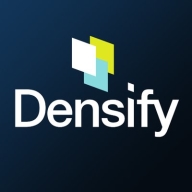

Densify and Avepoint FLY compete in the cloud optimization and data migration market. Densify holds an advantage in data analytics and optimization capabilities, while Avepoint FLY stands out for its seamless migration and data protection features.
Features: Densify provides advanced analytics, precise cloud resource optimization, and intelligent automation. Avepoint FLY offers comprehensive data migration tools, robust backup options, and reliable data protection.
Ease of Deployment and Customer Service: Avepoint FLY ensures a straightforward deployment process with extensive documentation and support. Densify, while more complex due to customizations, is well supported by thorough customer service.
Pricing and ROI: Densify's pricing targets long-term ROI through optimization. Avepoint FLY offers competitive pricing with a focus on immediate value and quick returns through efficient migrations.


True to its name, AvePoint FLY will help you fly through your migration to Microsoft 365 Cloud. AvePoint FLY is a highly-regarded solution that will quickly facilitate the migration and consolidation of data from file shares such as Google Drive, Slack, Dropbox, Microsoft Teams, Microsoft 365 groups, and more, to your Microsoft 365 cloud.
AvePoint FLY is easy to set up and deploy and very easy to use. It provides for a thorough, speedy migration process that will save you and your organization time and money, while also ensuring any and all regulatory and compliance protocols are being thoroughly satisfied during the entire process.
Here is a quick rundown of how the solution works:
Analyze: AvePoint FLY starts with an intuitive analysis tool that can easily identify and determine which files are used regularly and are pertinent versus which files are stale and can be deleted or archived. The software can help enhance the migration planning and overall migration process while avoiding costly potential problems and threats. AvePoint FLY can easily understand what your current architecture comprises and make the very best, most precise decisions regarding your migration to Microsoft 365 cloud. The solution will greatly reduce administration time and will help you avoid costly hiccups and other issues, keeping the migration process moving smoothly at all times.
Migrate: AvePoint FLY tremendously simplifies the migration process by accurately consolidating the file shares using intuitive, policy-driven controls and solid migration planning to ensure every file share migrates according to your preset plans and protocols. You can choose to migrate in real time or schedule the migration for whenever you desire. The entire migration process can be managed with a simple drag-and-drop selection from the dashboard.
Monitor: You can closely track the progress and the results of your migration on the very user-friendly, easy-to-understand dashboard to ensure your pre-set, policy-driven controls and protocols are being met every step of the way. There are several different value-added reports available to access that will closely monitor what results and actions are being taken throughout the entire migration process. You can share that information with your clients and necessary team members so that everyone is fully aware of the progress of the migration at all times.
Support: AvePoint FLY offers outstanding, 24/7 support for the solution and throughout your migration process. There are several different support options available: phone, online, email, and now even a new customer portal.
AvePoint FLY is a great option if you need to declutter, purge or organize your data and you want it done quickly and economically. AvePoint FLY offers very flexible pricing options to fit just about every budget and every business size.
Reviews from Real Users
The solution is very straightforward to use. It's not overly difficult to figure out. Everything seems to be quite flexible. This is helpful as this was part of our requirements for a solution. The solution is quite stable and the performance has been good. - Manoj K., Senior System Administrator at a computer software company
Densify is a hybrid cloud and container resource management platform that makes workloads self-aware of their precise resource requirements and automates the resource management and selection process. This solution helps you control your cloud spend and also helps your apps perform and scale better. Densify enables you to match your cloud requirements with the optimal cloud supply. Additionally, Densify is the only technology that leverages patented, predictive machine learning-powered analytics to perform advanced modeling of workload patterns, and provide precise optimization directives. It is ideal for cloud engineers, container platform owners, and IT finance.
Densify works by:
Densify Features
Densify has many valuable key features. Some of the most useful ones include:
Densify Benefits
There are many benefits to implementing Densify. Some of the biggest advantages the solution offers include:
We monitor all Cloud Migration reviews to prevent fraudulent reviews and keep review quality high. We do not post reviews by company employees or direct competitors. We validate each review for authenticity via cross-reference with LinkedIn, and personal follow-up with the reviewer when necessary.